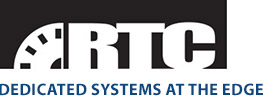Guidelines for Designing Embedded Systems with Windows 10 IoT Enterprise
 This paper will focus on the techniques for creating a task-specific or industry-specific
This paper will focus on the techniques for creating a task-specific or industry-specific
experience for users of your device. If you are planning to deploy applications using
the Win32 application programming interface on your device, the techniques you have
used in the past are still supported and available for your use.
If you are planning to invest in building a Universal Windows Application (UWA), you
will need to plan your application design carefully to ensure that the device when
running your application cannot also be used as a general-purpose computing device.
For information on developing Windows Universal applications:
http://msdn.microsoft.com/en-us/windows/apps/
This paper will only address topics related to creating a task-specific experience. Other
topics related to Windows 10 applications, such as provisioning, deployment, and
development, will be addressed in other papers.
The OEM agreement terms require that device usage be limited to a single purpose.
Your goal will be to create an experience that immerses the user in your application
on your device, and which does not allow the user to successfully use the device for
general-purpose computing.
There are a number of techniques you can use to help ensure the task-specific nature
of your device. The scenarios to be reviewed in this paper include:
